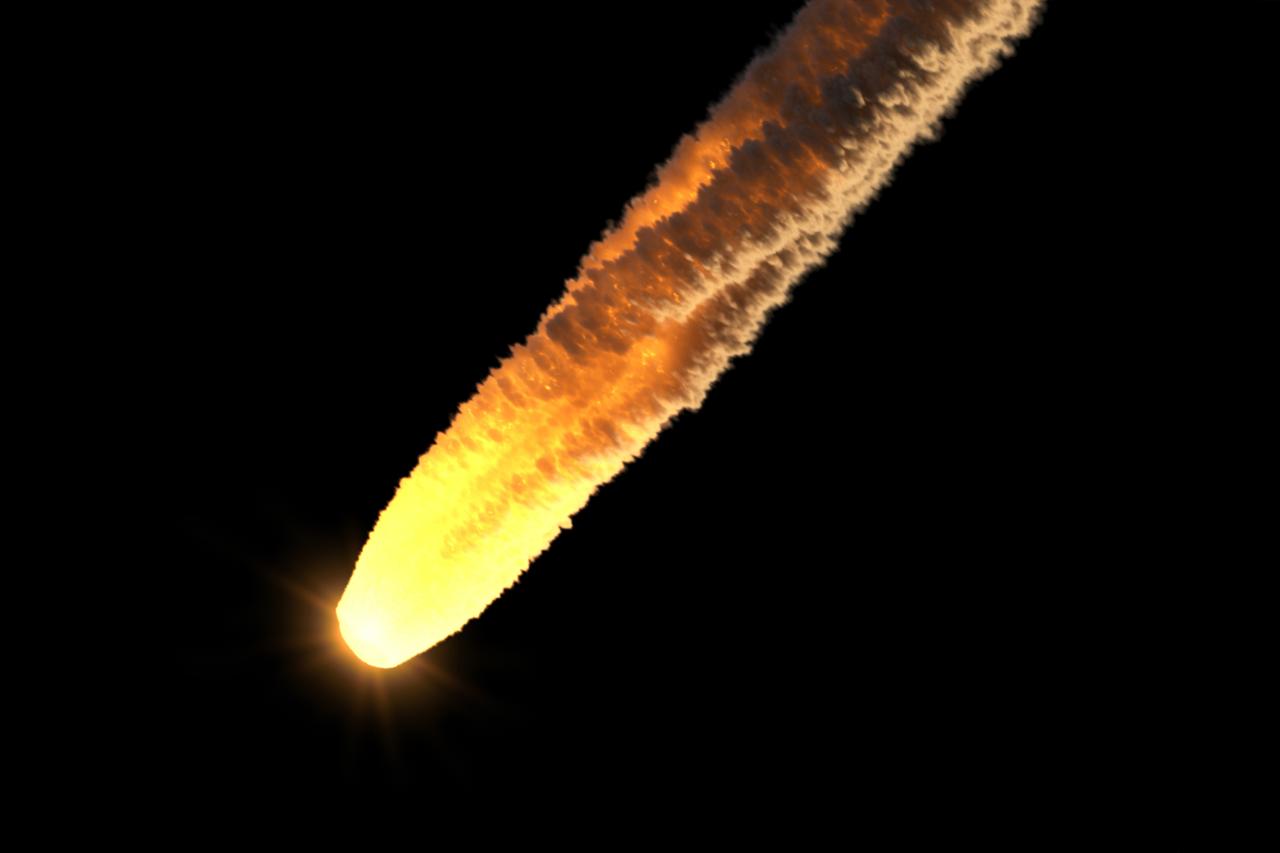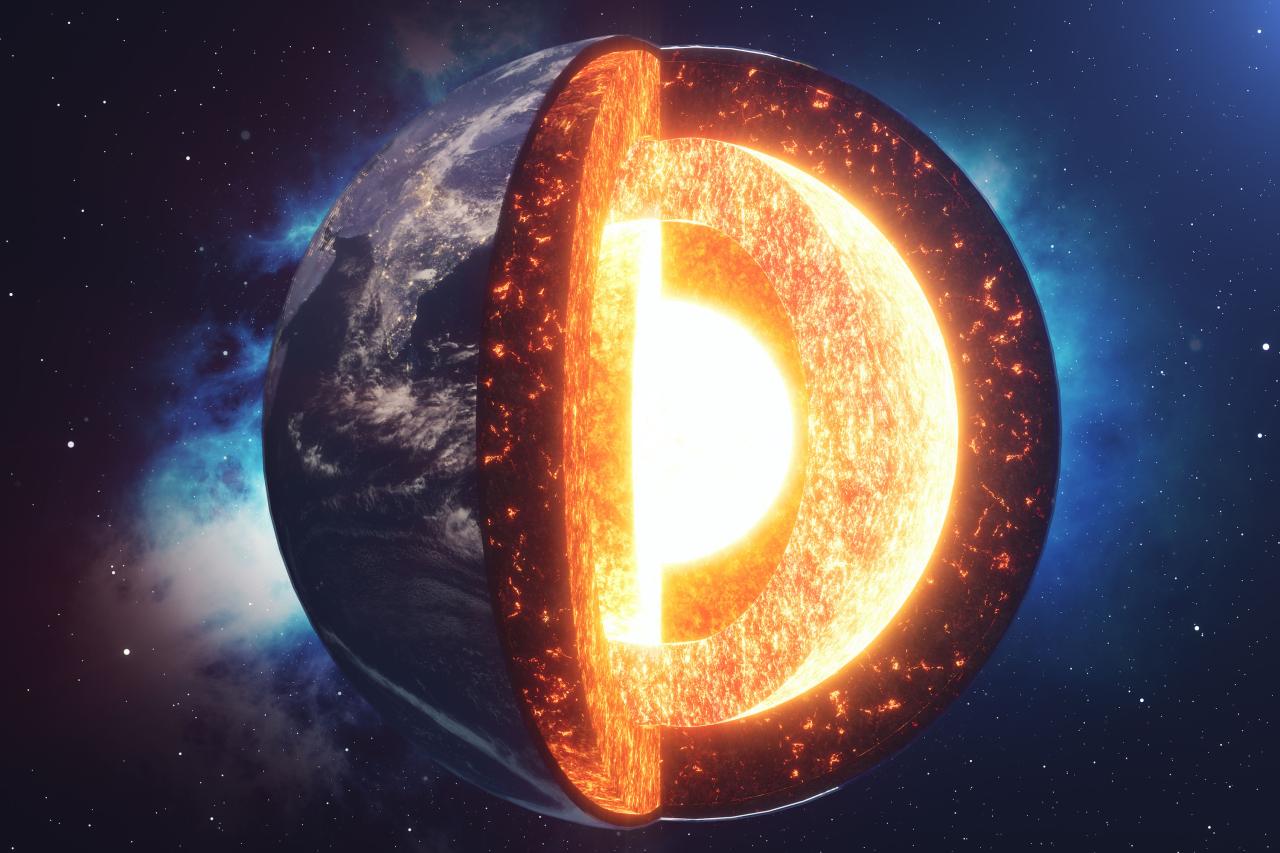At one time during Earth’s history, elemental forces heaved the great landmasses in the direction of the equator. So colossal was this shift, it was like Boston being dragged down to zero latitude—a distance more than 1,600 miles.
This massive shift occurred 800 million years ago, explained Adam Maloof, an associate professor of geosciences at Princeton University, in an NPR interview. Its rate of about 20 inches (50 centimeters) per day is breakneck speed in geology. That’s some five times faster than the rate that Earth’s crust moves today.
He said that the globe, as it rotates, shifts its weight toward the equator to maintain equilibrium, while the crust is sliding literally: “The core of the Earth, the outer part, is actually fluid iron, and it has about the viscosity of water.”
This accounts for one of myriad moments when the universe went boom. Others far larger have occurred beyond our terrestrial realm.
 (Rost9/Shutterstock)
(Rost9/Shutterstock)On a more macro scale, scientists in recent years have found that the solar system was a lot less stable since its birth than once thought.
In 2006, space probe Stardust brought back to Earth fascinating matter gathered from the comet Wild 2. Scientists expected to find substances formed far away from the sun—”cold” material—but found instead that it had matter forged both near and far away from the sun.
The astonishing implications were that matter formed abundantly in the inner solar system but was shot to the edge of the solar system.
And even more calamitous theories exist involving planetary disasters.
Exploded Planet Hypothesis
Astronomer Tom Van Flandern counts those findings from Wild 2 as evidence supporting what’s called the Exploded Planet Hypothesis. He has said that over the course of the solar system’s 4.6 billion-year history, some of its planets were destroyed in blasts of great magnitude.
This is a controversial hypothesis. Van Flandern had received pressure from his colleagues to drop it. He came to support this theory after beginning research that was intended to discredit it. Receiving his Ph.D. in astronomy from Yale, he has worked for 20 years at the U.S. Naval Observatory, where he became chief of the celestial mechanics branch, before beginning independent research on his more controversial topics.
 (Alexyz3d/Shutterstock)
(Alexyz3d/Shutterstock)In a paper published in the International Journal of Astrobiology in 2007, titled “The Challenge of the Exploded Planet Hypothesis,” he listed off some predictions made by this hypothesis, which have rung true, including: “(1) satellites of asteroids; (2) satellites of comets; (3) salt water in meteorites; (4) ‘roll marks’ leading to boulders on asteroids; (5) the time and peak rate of the 1999 Leonid meteor storm; (6) explosion signatures for asteroids; (7) the strongly spiked energy parameter for new comets; (8) the distribution of black material on slowly rotating airless bodies; (9) splitting velocities of comets.”
Some of the objections to this theory posit that the mass of said exploded planets is missing in the figuring of matter within our solar system. Van Flandern rebuts this, stating: “Consider what would happen if the Earth exploded today. Surface and crustal rocks would shatter and fragment, but remain rocks. However, rocks from depths greater than about 40 km [24 miles] are under so much pressure at high temperature that, if suddenly released into a vacuum, such rocks would vaporize. As a consequence, over 99 percent of the Earth’s total mass would vaporize in an explosion, with only its low-pressure crustal and upper mantle layers surviving.”
“Over 99 percent of the Earth’s total mass would vaporize in an explosion, with only its low-pressure crustal and upper mantle layers surviving.”
, astronomer
While some explanations behind exactly how these explosions happened are unclear, Van Flandern points out that we are no more certain about how the widely accepted phenomenon of “late heavy bombardment” occurred. Which brings us to our next great cataclysm.
Late Heavy Bombardment
Not long after the major planets formed, an unexpectedly large number of asteroids, it is believed, collided with the terrestrial planets, including Earth.
Paul Weissman of NASA’s Jet Propulsion Laboratory wrote in his paper “The Impact History of the Solar System: Implications for the Origin of Atmospheres” that “a plausible explanation for the late heavy bombardment remains something of a mystery.”
 Artist’s rendering of the moon during the late heavy bombardment. (Tim Wetherell/Australian National University/CC BY-SA 3.0)
Artist’s rendering of the moon during the late heavy bombardment. (Tim Wetherell/Australian National University/CC BY-SA 3.0)Van Flandern states: “The late heavy bombardment, a real solar system event, sounds like an early planetary explosion event.”
According to NASA, that planetary migration may have caused the late heavy bombardment.
Planets Moving
According to NASA: “One model for our own solar system suggests that our giant planets’ orbits shifted dramatically early in the solar system’s history, with Jupiter’s orbit migrating slightly inward toward the sun, and those of Saturn, Neptune, and Uranus expanding farther from the sun. These dramatic movements gave us the order of the planets and smaller bodies that we are familiar with today, and caused many smaller bodies (such as comets) to scatter.”
 A photo of Neptune and its moon, Triton, taken by Voyager 2. Triton’s orbit will eventually take it within Neptune’s Roche limit, tearing it apart and potentially forming a new ring system. (NASA)
A photo of Neptune and its moon, Triton, taken by Voyager 2. Triton’s orbit will eventually take it within Neptune’s Roche limit, tearing it apart and potentially forming a new ring system. (NASA) Meteor Crater in Arizona, created 50,000 years ago by an impactor only 160 feet (50 meters) across, evinces that the accretion of the solar system is not over. (D. Roddy/U.S. Geological Survey)
Meteor Crater in Arizona, created 50,000 years ago by an impactor only 160 feet (50 meters) across, evinces that the accretion of the solar system is not over. (D. Roddy/U.S. Geological Survey)Pulling forces from cosmic bodies beyond our solar system continue to cause changes in the alignment of planets, as slow and minute as those alterations may appear to us.
The bumpy history of our planet, moon, and solar system is still being explored and reveled by scientists. Did the planets form initially in their present locations, or have they moved around dramatically over the course of history? Have some even exploded? The mysteries behind these incredible cosmic forces, and their history, propels the imagination on into the future. Might there be more and far greater big booms yet to come? Shifting landmasses? Perhaps planets transiting the solar system? Only time will tell.
Related posts:
Views: 0
 RSS Feed
RSS Feed

















 September 4th, 2022
September 4th, 2022  Awake Goy
Awake Goy  Posted in
Posted in  Tags:
Tags: 





















